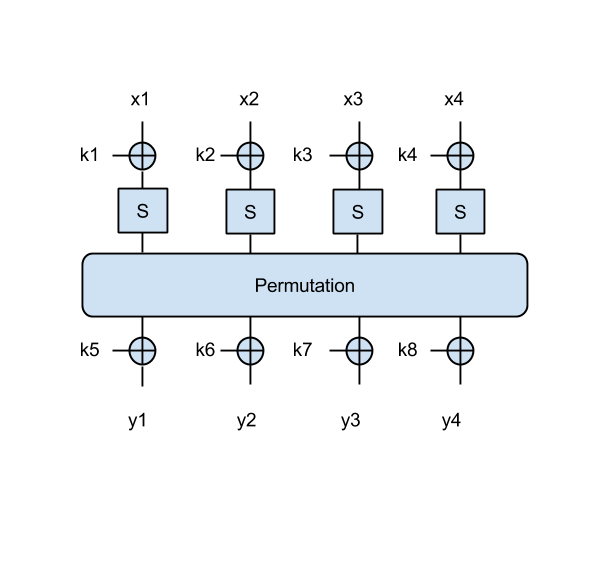This is an old revision of the document!
Diverse exercitii
Exercise 3
How can you distinguish a cipher composed only of a Feistel network from a random function if it has only (a) one round, (b) two rounds?
For clarity, here is an image of such a cipher with two rounds:

Exercise 4
A sequence of plaintext blocks M1, . . . , M8 is encrypted using DES into a sequence of ciphertext blocks. Where an IV is used, it is numbered C0. A transmission error occurs and one bit in ciphertext block C3 changes its value. As a consequence, the receiver obtains after decryption a corrupted plaintext block sequence M1′,…,M8′. For the discussed modes of operation (ECB, CBC), how many bits do you expect to be wrong in each block Mi′? (Hint: You may find it helpful to draw decryption block diagrams.)
Please motivate your answer.
SPN 3
As another example, which uses a larger block size, let's use an SPN that takes a 4-byte input x=[x1 || x2 || x3 || x4] and an 8-byte key k=[k1 || k2 || k3 || k4 || k5 || k6 || k7 || k8] as in this figure:

Note that in this 4-byte SPN, the permutation operates on all 4 bytes, similarly to the 2-byte SPN: that is, it shifts all bits four bits to the right.
- Try to find the key in this case as well, using the following message/ciphertext pairs: ('Omul', 0xddcf7bc7), ('stea', 0x96d58b43), ('luna', 0x9c3f2303) . Again print the key in ascii.

